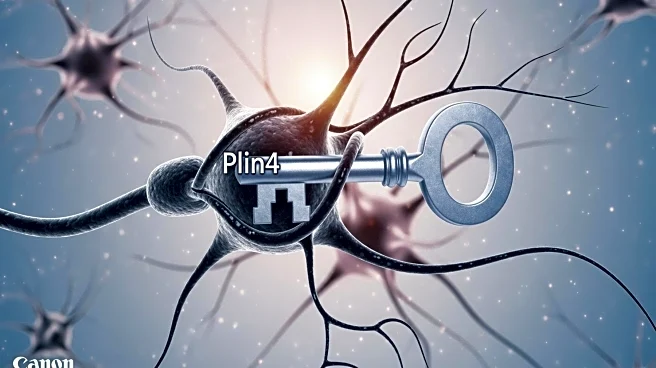What's Happening?
Recent research has identified the protein HSPA4 as a significant factor in reducing ferroptosis, a form of cell death, in dopaminergic neurons within a Parkinson's disease model. The study involved overexpressing HSPA4 in SH-SY5Y cells, which are a model for human neurons, and treating them with erastin to induce ferroptosis. Results showed that HSPA4 overexpression significantly reduced lipid oxidation, a marker of ferroptosis, in these cells. Additionally, in a mouse model of Parkinson's disease, treatment with AAV-HSPA4 prevented increases in glial fibrillary acidic protein expression, which is associated with neurodegeneration. This suggests that HSPA4 could play a protective role against neuronal damage in Parkinson's disease.
Why It's Important?
The findings are crucial as they offer a potential therapeutic target for Parkinson's disease, a neurodegenerative disorder affecting millions worldwide. By attenuating ferroptosis, HSPA4 could help preserve neuronal function and slow disease progression. This research adds to the understanding of cellular mechanisms in Parkinson's disease and opens avenues for developing treatments that could mitigate neurodegeneration. The broader implications could extend to other neurodegenerative diseases where ferroptosis plays a role, potentially impacting public health and treatment strategies.










